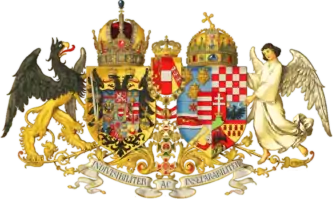Prater
The Prater (German: [ˈpraːtɐ]) is a large public park in Vienna's 2nd district (Leopoldstadt). The Wurstelprater, an amusement park that is often simply called "Prater", lies in one corner of the Wiener Prater and includes the Wiener Riesenrad Ferris wheel.
| Prater | |
|---|---|
 Wiener Riesenrad in the Wurstelprater amusement park | |

| |
| Location | Vienna, Austria |
| Created | 7 April 1766 (public) |
Name
The name Prater derives from one of two Latin words (or possibly both): pratum, meaning meadow; and Praetor, meaning magistrate or lawyer, possibly via Spanish prado or Italian prato.
History


The area that makes up the modern Prater was first mentioned in 1162, when Emperor Friedrich I gave the land to a noble family called de Prato. The word "Prater" was first used in 1403, originally referring to a small island in the Danube north of Freudenau, but was gradually extended to mean the neighbouring areas as well. The land changed hands frequently until it was bought by Emperor Maximilian II in 1560 to be a hunting ground. To deal with the problem of poachers, Emperor Rudolf II forbade entry to the Prater. On April 7, 1766, Emperor Joseph II declared the Prater to be free for public enjoyment, and allowed the establishment of coffee-houses and cafés, which led to the beginnings of the Wurstelprater. Throughout this time, hunting continued to take place in the Prater, ending only in 1920.
In 1873, a World Exhibition was held in the Prater, for which a large area of land was set aside, centered on the Rotunda, which burnt down in 1937. This land now houses the Messegelände (exhibition centre).
On the grounds of modern-day Kaiserwiese, an attraction called "Venice in Vienna” was established in 1895 by Gabor Steiner. The area included an artificial lagoon to simulate the canals of Venice, Italy.
In 2004, major renovations to the Wurstelprater began, and a new underground railway line was finished and brought into service on May 11, 2008, which includes three stops along the Prater (see Vienna U-Bahn). Wien Praterstern railway station has been in operation for a long time and is only a few dozen metres away from an entrance to the park.
The overall area of the park has also been reduced by the building of the Ernst-Happel-Stadion (Austria's national stadium), the Südosttangente (Austria's busiest motorway) and Krieau Race Track. In 2013, the new campus of the Vienna University of Economics and Business was opened next to the Prater.
In 2019, Eliud Kipchoge ran the marathon distance of 26.2 miles laps on a stretch of road in the park in the INEOS 1:59 Challenge. His time of 1:59:40 was the first time anyone had run the marathon distance in under two hours.[1]
Other attractions

The Hauptallee (main avenue) is the main artery, lined with horse chestnut trees, closed to motorists and known to sports enthusiasts from the annual Vienna Marathon. The Wiener Prater is home to the Liliputbahn, a narrow gauge railway. Another unusual object to be found in the Wiener Prater is the Republik Kugelmugel (Republic of Kugelmugel), a spherical micronation. The Wiener Prater also houses a planetarium and the Prater Museum.
See also
References
- Andrew Keh (2019-10-12). "Eliud Kipchoge Breaks Two-Hour Marathon Barrier". New York Times. Retrieved 2019-10-12.
External links
| Wikimedia Commons has media related to Prater. |

